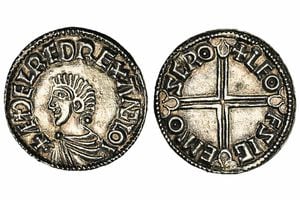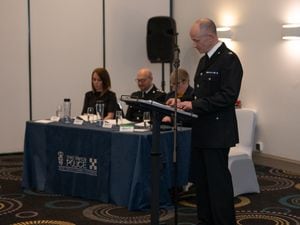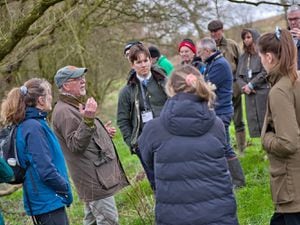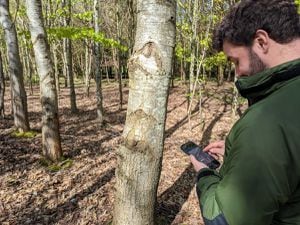Silver coin worth a penny 1,000 years ago to fetch £500 at Shrewsbury sale
It was worth a penny when it was created in Shrewsbury more than 1,000 years ago.

And now the silver coin is likely to reach at least £500 at auction.
The penny, which was made at the Shrewsbury Mint between 978 and 1016, will be auctioned by Spink at Bloomsbury in London on March 26.
There was a mint in Shrewsbury during the 10th Century producing coins for the Saxon kings but this had closed by the time of the Norman invasion. During the reign of Henry I, there were several mints throughout Britain but the quality of the coins produced began to deteriorate as the silver content was reduced. At the Assize of Winchester on Christmas Day 1124, all the mint masters were punished by having their right hands cut off. Not surprisingly, this produces a temporary improvement in the quality of the coinage.
By 1158, Henry II was concerned that English coinage was not only poor in quality but there were many variants. Nobles had produced their own coins during the civil war of Stephen's reign and these were still in circulation. He thus declared that coinage was a royal monopoly and introduced the distinctive "long cross" coinage. Following on from this, he changed the administrative structure of the English mints and in 1180 introduced the "short cross" coinage.
Jon Mann, a coins expert at Spink, said the piece is a superb, and rare example.
He said: "You don't see a lot of Shrewsbury coins from the late Anglo-Saxon period and this one is in superb condition. You cannot get any better than this."
The penny was made during the reign of King Ethelred The Unready – around 50 years before the landmark Battle of Hastings in 1066.
Spink expect it to fetch between £400 and £600 at the auction next week, and Mr Mann described it as "a most pleasing coin with extensive lustre and eye appeal", which is in "extremely fine condition".
The coin features the name and an image of King Ethelred and also the name Leofsige. The second name refers to the so-called "moneyer", who oversaw production of coins at the Shrewsbury Mint.
Spink also point out that the die on the obverse of the penny was also used by another moneyer at the Shrewsbury Mint, named Aelfheh.
Mr Mann said that Shrewsbury pennies from the Ethelred reign are "scarce" and that the town would have been considerably smaller when it was made, with a population of fewer than 1,000.
The penny is also mint-signed, which means that Shrewsbury is mentioned on the coin, with the letters 'SCRO' representing an abbreviation of the Old English name for the town – Scrobbesbyrig.





